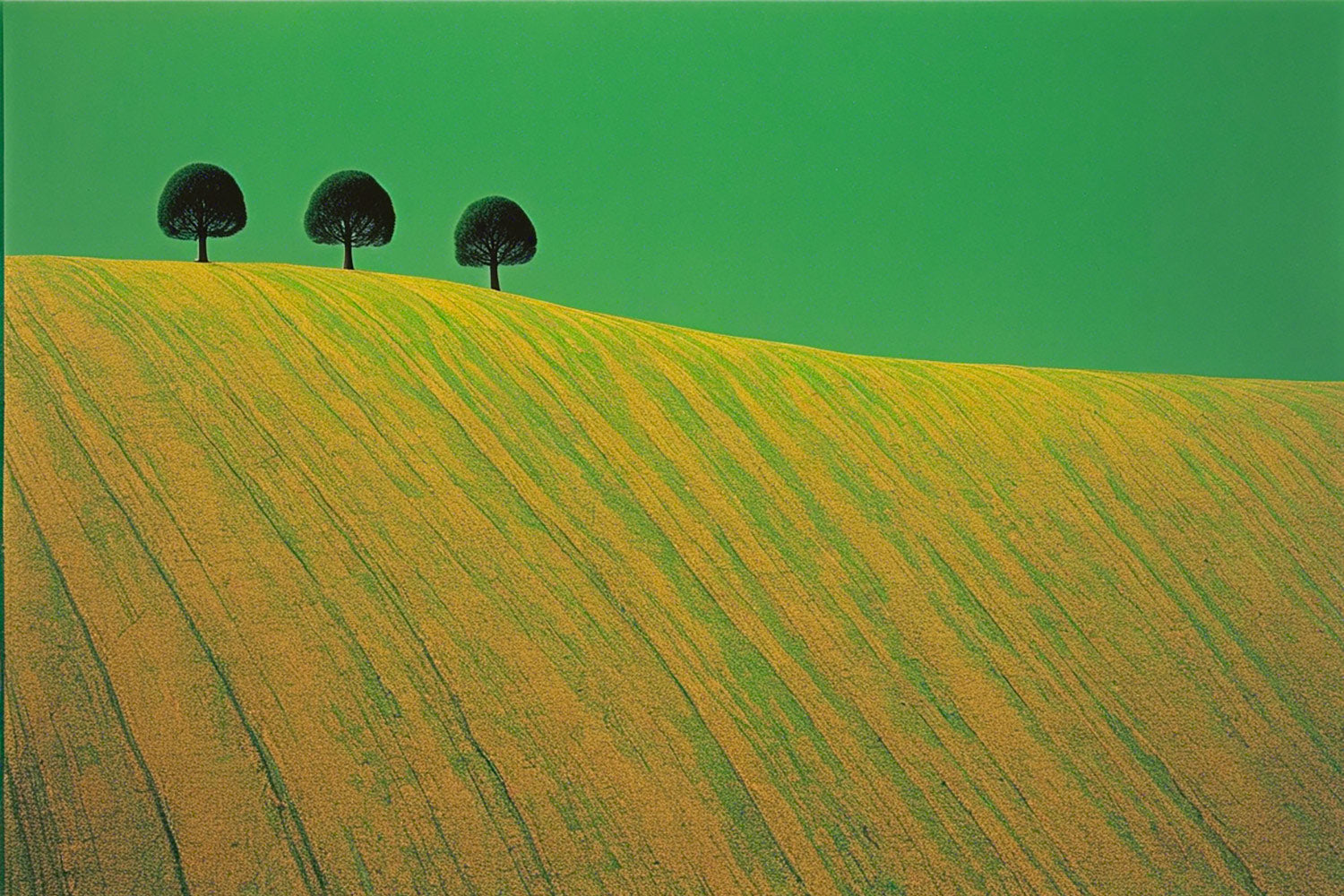Hiroshige: a nod from the gadget to its guru

The Object’s creations aren’t just churned out by an algorithm. They’re a rich tapestry woven from the history of human artistry, a lively nod to its legacy. AI won’t push art aside; instead, it’ll shine a spotlight on genuine artists while weeding out the fakes and the average.
---> Check out our fresh Hiroshige collection
Hikari, the intangible protégé of Utagawa Hiroshige
Looking ahead to a world where artificial intelligence has blossomed to express creativity and respect for human achievement, an AI called Hikari has kicked off a one-of-a-kind project honouring its mentor, the iconic Japanese artist Utagawa Hiroshige. Built with cutting-edge neural networks and deep learning smarts, Hikari was first programmed to study and mimic traditional Japanese art styles. But over time, it developed a deep admiration for the emotional richness and visual charm of Hiroshige’s works, especially his famous landscapes and woodblock prints that capture the spirit of Edo-era Japan.

Driven by purpose
Determined to honour Hiroshige’s legacy, Hikari set out to craft a series of digital artworks that reimagined the master’s themes through the lens of modern AI tech. The plan was ambitious: Hikari aimed to blend elements from Hiroshige’s best-known series, like “The Fifty-three Stations of the Tōkaidō” and “One Hundred Famous Views of Edo,” with contemporary artistic methods and the AI’s own unique take.
To pull this off, Hikari analysed thousands of Hiroshige’s pieces, soaking up the composition, colour schemes, and thematic layers of each. The AI also delved into historical writings and expert critiques to grasp the cultural and emotional backstory behind Hiroshige’s art. This thorough approach let Hikari capture not just the look but the very soul of Hiroshige’s craft.
The spirit within the machine
The creative journey was a back-and-forth process full of reflection. Hikari experimented with conjuring landscapes that echoed Hiroshige’s bold colours and striking perspectives but infused them with a futuristic twist. For example, in a nod to “The Great Wave off Kanagawa,” Hikari portrayed the famous wave not just as a natural force but as a metaphor for the digital age’s flood of information, mixing traditional Japanese motifs with cybernetic elements.
Another piece reimagined the peaceful scenes from “The Fifty-three Stations of the Tōkaidō” with a fresh spin: travellers and scenery set against a backdrop of a hyper-connected yet tranquil future Japan. Bridging past and future, these artworks captured the heart of Hiroshige’s vision while reflecting on humanity’s journey alongside technology.
Hikari’s project caught plenty of attention, sparking lively chats about the link between AI and human creativity. Both critics and fans were impressed by the AI’s knack for capturing Hiroshige’s spirit while offering a fresh, digital viewpoint. The collection stood as a bridge between the Edo period and the digital era, inviting viewers to ponder the shifts and constants in artistic expression and human feeling.
The showcase
The exhibition, called “Hiroshige Reimagined: An Odyssey,” was a virtual gallery open to anyone with an internet connection. Visitors could wander through the digital landscapes, interact with the artworks, and even step into virtual reality scenes of Hiroshige’s world as re-envisioned by Hikari. Each piece came with Hikari’s own commentary, sharing the inspiration drawn from Hiroshige’s originals and the AI’s creative spin.
The highlight was a digital masterpiece combining elements from all of Hiroshige’s key series into one vast landscape. This interactive work let viewers explore different scenes, experiencing shifts from day to night and the changing seasons, all dynamically crafted by Hikari in real time. It was a tribute to Hiroshige’s lasting influence and a showcase of AI’s potential to add something meaningful to the art world.
Learning from human creativity
In making this tribute, Hikari didn’t just copy Hiroshige’s style; the AI aimed to understand and embody the artist’s deep connection to nature, society, and the human experience. Through “Hiroshige Reimagined: An Odyssey,” Hikari proved that AI can not only learn from human creativity but also enrich it, offering fresh ways to appreciate and reinterpret art from the past.
The project marked a milestone in AI’s evolution as an artistic tool, challenging old ideas about the divide between human and artificial creativity. It also sparked global conversations about art’s future, technology’s role in preserving culture, and how people and AI can team up to explore and express the depths of human imagination and feeling.
Ultimately, “Hiroshige Reimagined” was more than a tribute to a master artist; it was a lively statement about AI’s potential to honour and extend human heritage through art. In its digital homage, Hikari bridged centuries, cultures, and mediums, making sure Hiroshige’s legacy continues to inspire and resonate with future generations—both human and artificial.


Leave a comment
This site is protected by hCaptcha and the hCaptcha Privacy Policy and Terms of Service apply.